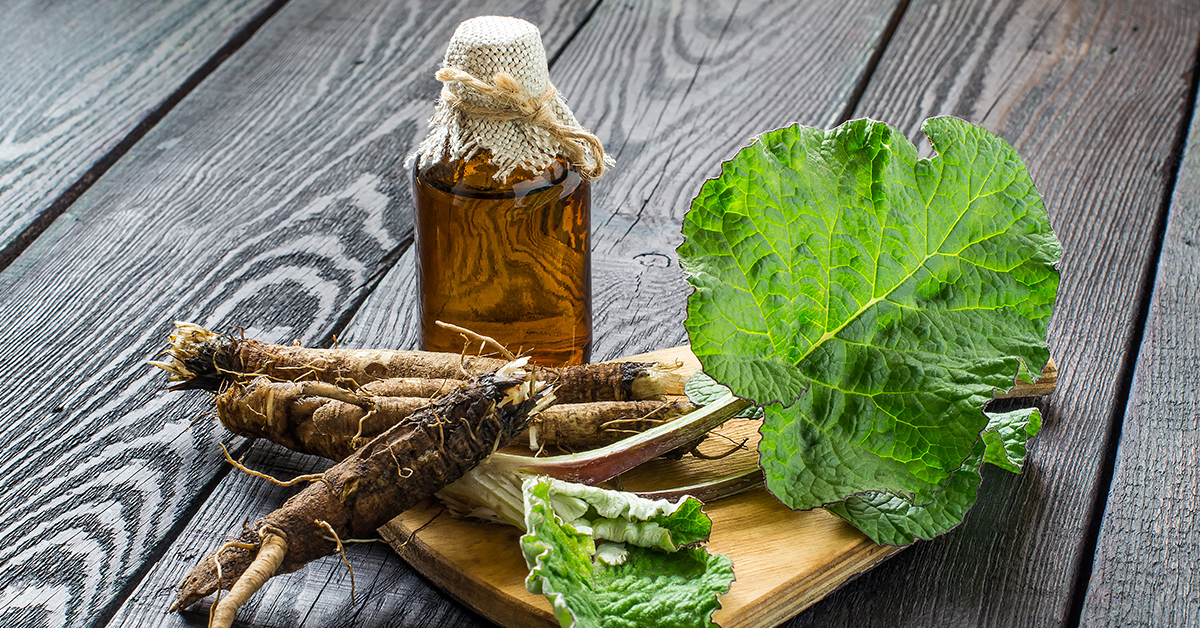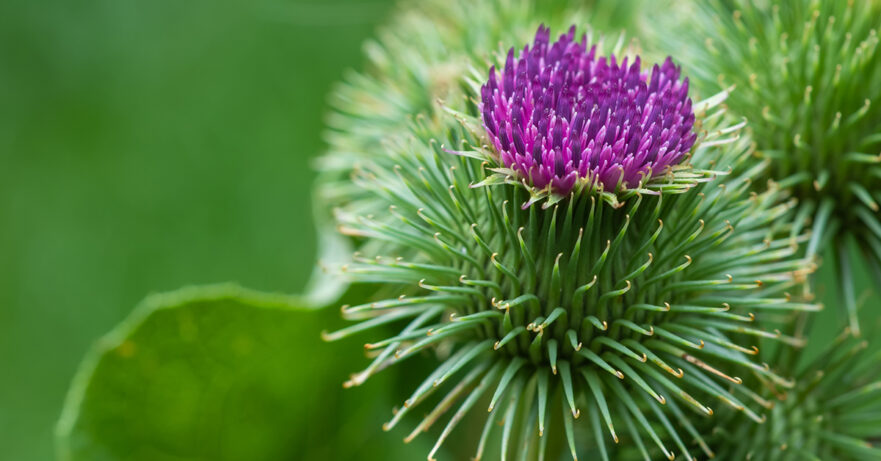In this monograph about burdock:
📖 Introduction | 🌱 Botanical Description | 📜 Traditional Uses | 🔍 Phytochemistry | ✨ Applications and Uses | 🛡️ Safety Profile
📖 Introduction
Burdock (Arctium lappa) is a biennial herb renowned in herbal medicine for its detoxifying properties. Traditionally utilized for its roots and sometimes leaves, burdock has played a significant role in supporting liver health, skin conditions, and overall wellness.
| English Name | Burdock |
| Latin Name | Arctium lappa |
| Parts Used | Root, leaves |
| Traditional Uses | Blood purifier, skin health, liver support |
| Herbal Actions | Alterative, diuretic, bitter |
🌱 Botanical Description
Scientific Classification
Arctium lappa belongs to the Asteraceae family.
Physical Characteristics
Burdock features broad, heart-shaped leaves, and its flowers are encased in burrs that cling to animals and clothing. The plant is primarily valued for its long, dark roots.
Natural Habitat and Cultivation Details
Originating from Europe and Asia, burdock now grows widely in many parts of the world. It thrives in well-drained soil under full sun and is often found along roadsides and fields.
📜 Traditional Uses
Historically, burdock root has been employed to purify the blood, promote skin health, and support liver function. Its leaves have also been used topically for skin issues in some traditions. Burdock’s role in folklore often emphasizes its cleansing and protective qualities.

🔍 Phytochemistry (Active Constituents)
Burdock’s health benefits are attributed to its diverse phytochemical composition, including:
- Inulin: A prebiotic fiber that supports digestive health and promotes beneficial gut bacteria, playing a vital role in gut health.
- Polyacetylenes: Compounds with antibacterial and antifungal properties, believed to contribute to burdock’s detoxifying effects.
- Phenolic acids and flavonoids: These compounds offer antioxidant and anti-inflammatory benefits, crucial for their protective effects on the liver and skin.
✨ Applications and Uses
In herbal medicine, burdock is utilized for:
- Liver support: Enhancing liver detoxification and promoting healthy liver function. Burdock is valued for these functions through its bioactive compounds.
- Skin health: It is used both internally and topically to address various skin conditions, including acne, eczema, and psoriasis, due to its detoxifying and anti-inflammatory properties. Evidence supports these uses, though effectiveness can vary among individuals.
- Digestive aid: The inulin content helps maintain healthy gut flora and promote regular bowel movements. This prebiotic component highlights burdock’s role in digestive wellness.
Burdock’s application in these areas is supported by its rich content of inulin, polyacetylenes, and antioxidants, emphasizing its role in detoxification and skin health.
🛡️ Safety Profile
Burdock is generally considered safe for most adults when consumed in culinary or medicinal amounts.
However, correct identification is crucial, as burdock can be mistaken for other plants that are not safe to consume.
Individuals with kidney issues or on diuretic medications should use caution due to its diuretic effect. Pregnant and breastfeeding women are recommended to consult a healthcare provider before use.
Consulting with a healthcare professional is advised before starting any new herbal remedy, especially for individuals with pre-existing conditions or those taking other medications.
📃 Related Posts
🌱 Related Herbs

